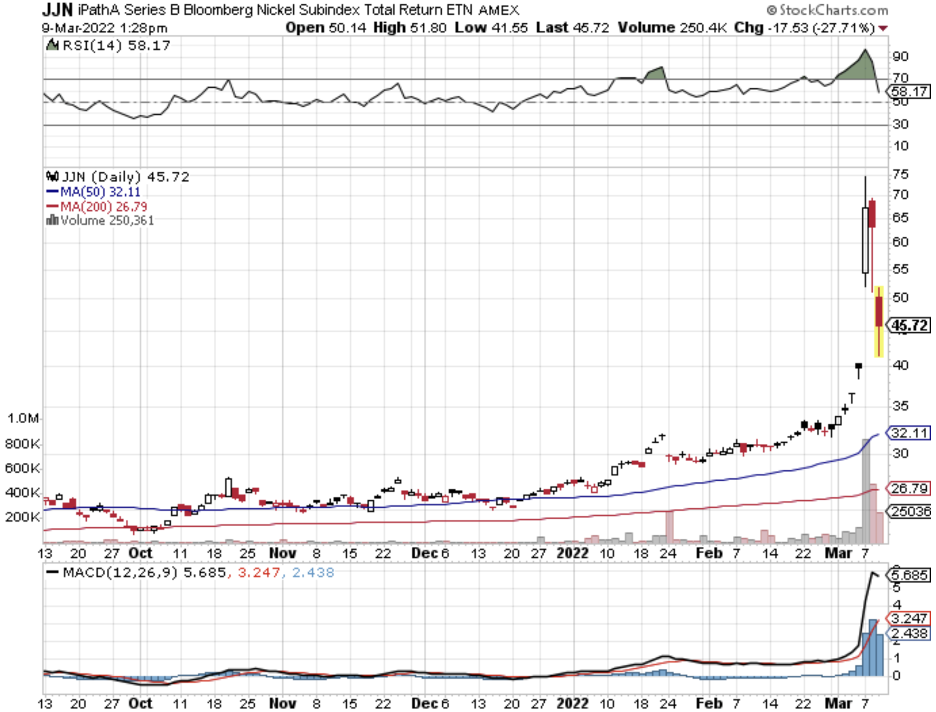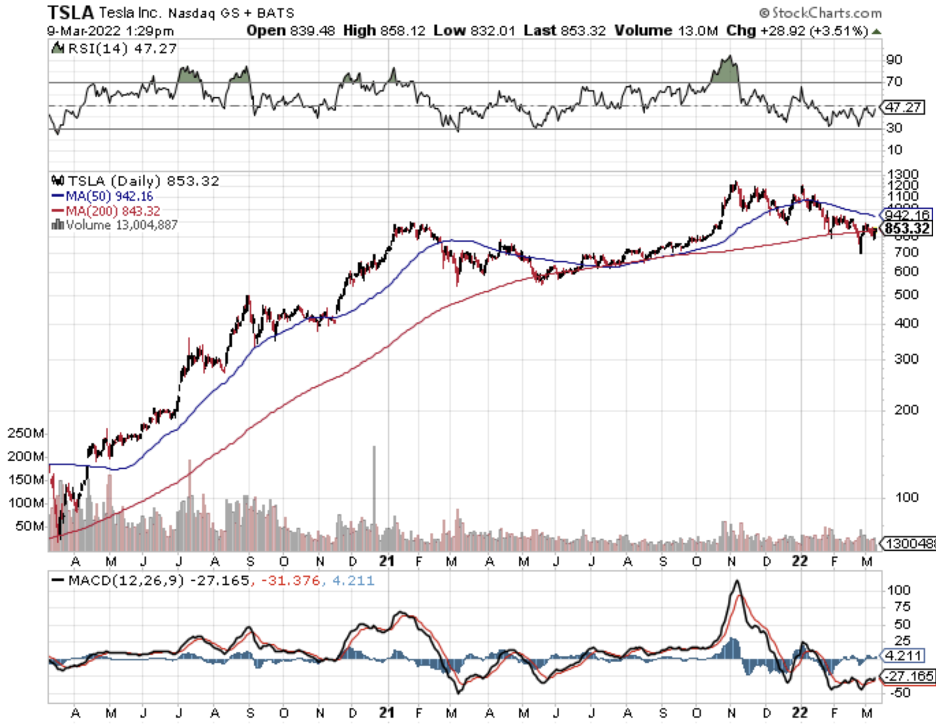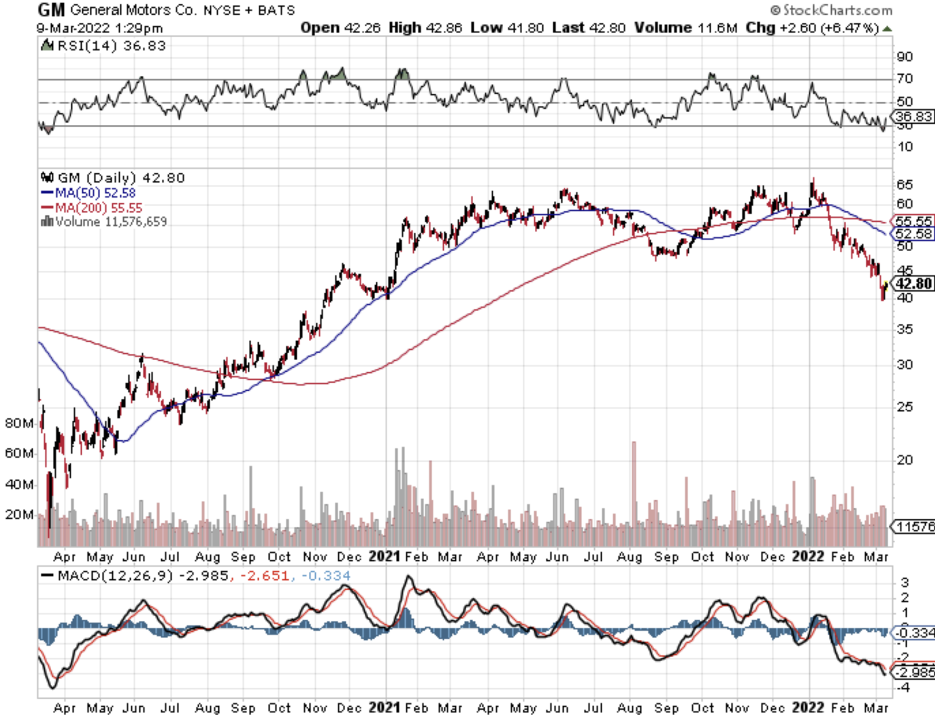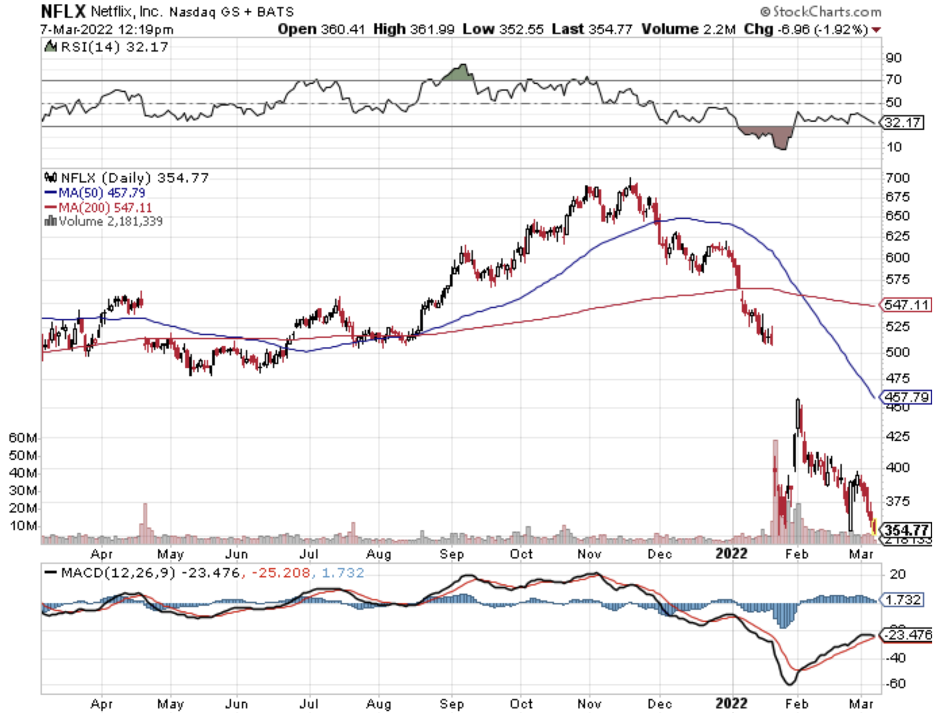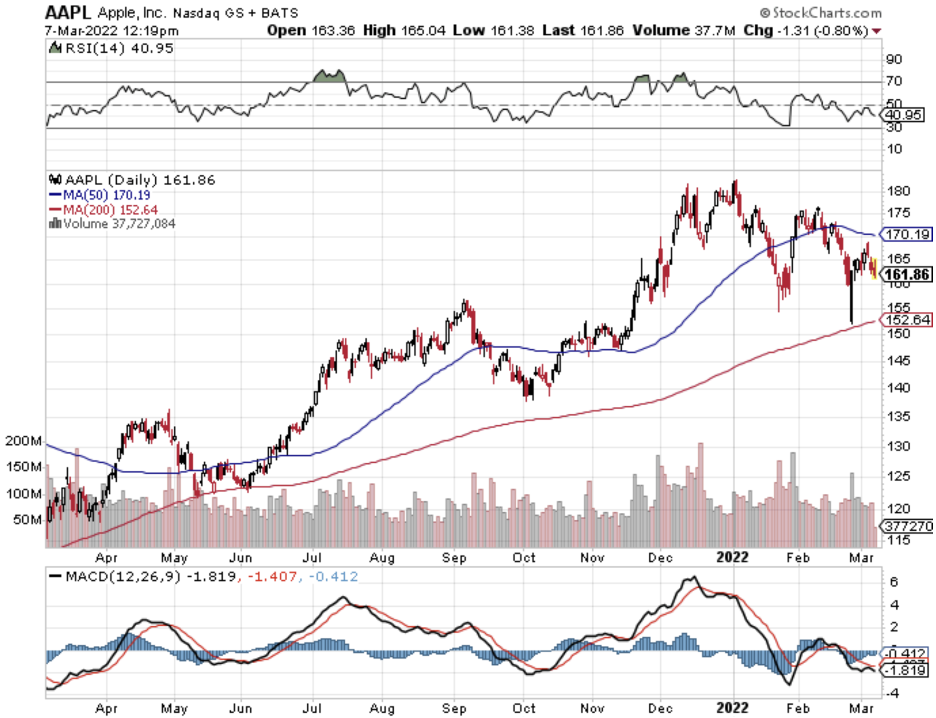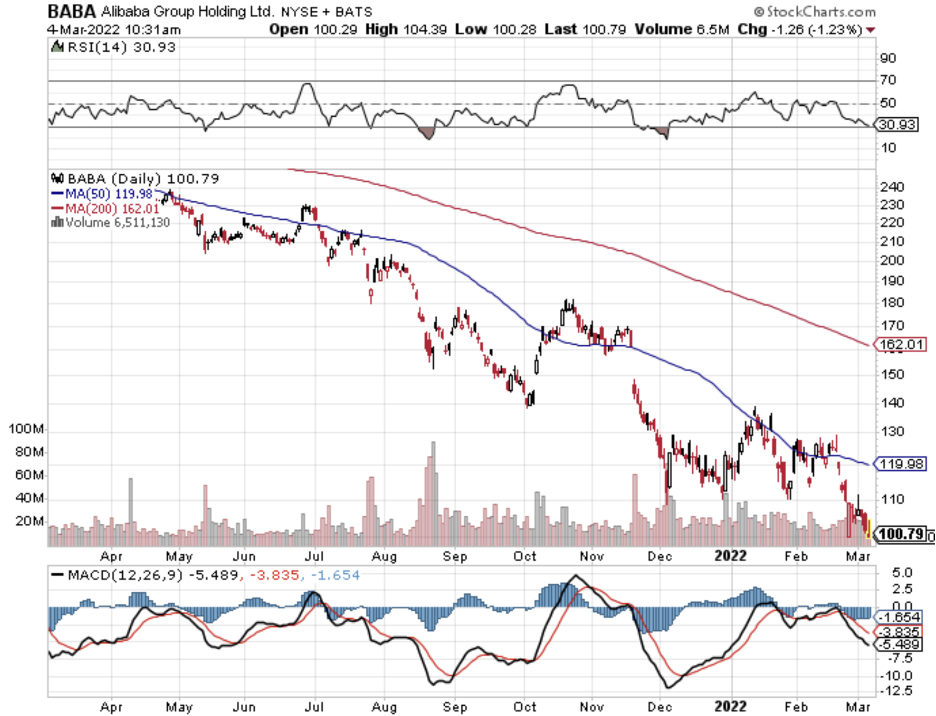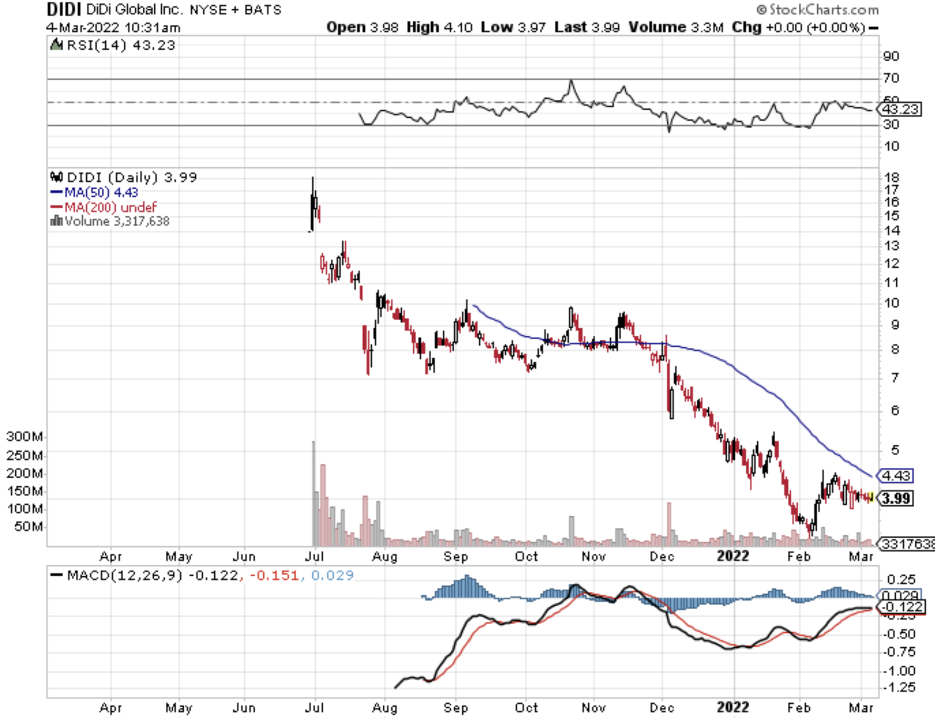“Don't chase a girl, let the girl chase you.” – Said Founder of Softbank Masayoshi Son
Mad Hedge Technology Letter
March 9, 2022
Fiat Lux
Featured Trade:
(NICKEL MARKET BECOMES HELLISH)
(JJN), (TSLA), (GM), (F)
Nickel (JJN) is essential for EV batteries, and that spells trouble for certain industries as the price of nickel explodes to the upside.
Projections between 2020 and 2037 reveal that global manufacturing of batteries for EVs and other new energy applications will rise tenfold.
That’s not a typo!
Recently, volatility was so high on nickel that London Metal Exchange, prompted a trading halt.
The price of nickel increased by 250% which many traders blamed directly on the war between Russia and Ukraine.
Unintended consequences have put shivers through the global economic system and higher prices of various types of metals will mean consumers will have less discretionary incomes.
Russia is one of the largest producers of nickel in the world, with miner Norilsk Nickel the number one producer of top-grade nickel globally.
If the metal were added to the sanctions list, it could severely shrink volume to Western suppliers and manufacturers.
EV batteries are one of the highest costs in producing an EV.
The price rise in nickel means that it will cost car manufacturers an extra $3,000 to produce the same car.
Costs are going up around the entire process of making an EV and the pain will be felt with a final sticker price substantially higher than today.
It is plausible that in 2 years we could experience a massive shortage which could exacerbate an already dire supply situation as demand continues to rise.
EVs are getting more popular as the quality of EVs produces gets better with each iteration.
No doubt Tesla helped popularize this type of car.
With the next biggest source of nickel being lower-grade Indonesian supply, and new nickel mines years away from getting online, the only logical conclusion is to bake in lower productivity from Western auto companies.
Ford (F) is planning to make 2 million EVs annually by 2026, GM (GM) hopes to sell 1 million EVs by mid-decade and launch 30 new EV models, and Stellantis plans to sell 5 million EVs by the end of the decade, with 25 new EV models on the way.
These companies are all catching up to Tesla (TSLA).
This will poo poo the momentum of the EV car movement temporarily which many believed would go into overdrive this year.
Once the business model supporting the case to make EVs becomes untenable, large car companies could pull back from these models until supply chains moderate.
Car companies aren’t in the business of building cars that lose money and now the unit economics have been thrown into chaos.
Uncontrollable costs to source raw materials for industrial battery makers such as LG Energy Solution, Panasonic, and Contemporary Amperex Technology Co will be passed to the end-user.
It will also make negotiations tougher with EV makers such as Tesla and Volkswagen. And it isn’t just nickel: Prices of cobalt and aluminum, two other key battery metals are grouped into this price surge as well.
U.S. President Joe Biden's solution for lower oil prices was to go out and buy an EV instead of buying gas at the pump. Well, that solution just became more costly and is rising by the day.
This effectively pushes the green movement further back and the high price of oil taking center stage is ruffling a lot of feathers for the American consumer that will have severe implications at the polls this November.
These costs headaches will also be a drag on EV stocks like Tesla in the short term because they simply won’t be able to deliver the volume of cars they planned to produce.
“Bitcoin is probably rat poison squared.” – Said Legendary U.S. Investor Warren Buffett
Mad Hedge Technology Letter
March 7, 2022
Fiat Lux
Featured Trade:
(SHORT TERM PAIN FOR SILICON VALLEY TECH)
(NFLX), (QQQ), (EPAM), (SNAP), (TDOC), (ARKK)
The American tech sector has largely been overshadowed by the events across the world.
Many would question why that would even matter.
What does that even have to do with an American smartphone or devices that permeate our society?
We deal with American tech stocks for this newsletter, and not with moral outrage or foreign policy matters.
So we stay in our lane and deal with various exogenous stocks that come our way as it relates to the Nasdaq (QQQ).
I don’t get to pick these shocks – they come in fits and starts and in different sizes.
The end of omicron was almost to the point of visualization, but we roll into yet another macro crisis of many groups’ makings.
Tech doesn’t operate in a vacuum, and politics, more often than I would like to admit, sometimes do overlap a great deal.
The world has changed dramatically in the past 14 days and the knock-on effects mean that American tech companies and their trillion dollars business models are pulling out of Russia, a country with a population close to 150 million, in droves.
It is what it is, and life moves on.
Netflix (NFLX) has been in operation in Russia since 2016 and the decision to vacate Russian business means they will lose around 1 million subscribers.
Most likely the worst tech company to work for right now in the world must be EPAM Systems (EPAM).
The internal chaos going on mainly stems from the 58,000 employees, with 14,000 of them in Ukraine and more than 18,000 staff in Belarus and Russia, according to company filings with the U.S. Securities and Exchange Commission.
EPAM’s stock is down 74% YTD in 2022 and is a stock that epitomizes the situation in Eastern Europe right now.
When workers refuse to work with each other, it’s hard to imagine that much gets done at all.
And this is just the tip of the iceberg.
The American tech withdrawals encompass all shapes and sizes.
Apple and Microsoft both said no bueno to selling products in Russia.
Game maker EA pulled the plug as well.
Google and Twitter have suspended advertising in Russia.
It’s a terrible time to monetize a YouTube channel in Russia because Google won’t pay you for it.
Likewise, Snap (SNAP) has pulled its marketing dollars from Russia too.
Another sonic boom hit Russian tech when Airbnb room-rental service suspended all operations in Russia and Belarus and has said its nonprofit subsidiary will offer free temporary housing to 100,000 Ukrainian refugees.
It's also waived host and guest fees for bookings in Ukraine, as people worldwide use Airbnb as a way to provide income directly to Ukrainians.
Adobe is halting sales of new Adobe products and services in Russia. In addition to making sure its products and services are not being used by sanctioned entities, Adobe is also cutting Russian government-controlled media outlets off from its cloud services.
What is emerging as quite black and white is that American technology companies hoping to apply their business model in autocratic states doesn’t integrate as well as first thought.
The weak rule of law along with all-powerful demagogue leaders make it hard to sustain any sort of business carve-out for the long term.
Eventually, many American companies are forced to abandon their ambitions in these marginal states.
The next question a tech investor must ask is will the American tech sector follow the lead from Russia and pull out from China.
Obviously, this has major implications for companies like Apple, Micron, and a handful of American tech companies that are entrenched in the Chinese economy and society.
Many people think this will blow over and tech will come back front and center, but short-term, this is highly negative for American tech stocks.
The more this situation drags out, the higher risk American tech is more involved in this mess from a different gateway.
The tech portfolio has been outright short recently and it was the perfect call to sell the dead cat bounce in growth tech like Teladoc (TDOC) and ARKK funds (ARKK).
“It's simple science: exercising creates endorphins and endorphins make us happy. On the most basic level, Peloton sells happiness.” – Said Former CEO of Peloton John Foley
Mad Hedge Technology Letter
March 4, 2022
Fiat Lux
Featured Trade:
(RUSSIA BRINGS DOWN CHINESE TECH)
(BABA), (DIDI)
Don’t buy Chinese tech stocks.
I’m not saying to avoid them because of Chinese Xi Jinping’s “common prosperity” campaign, although that isn’t ideal.
The Eastern European war has meant draconian sanctions levied on the Russian economy and these sanctions also have a tech angle to them, particularly a Chinese tech angle.
Chinese companies could find themselves subject to regulatory fines and other penalties for breach of sanctions if they continue to work with targeted Russian entities.
In effect, we could see a sudden exodus of Chinese tech companies from Russia if they determine that the juice isn’t worth the squeeze.
The same avoidance is happening with ships circling America with Russian oil, are buyers of these commodities certain they won’t face sanctions if they buy Russian oil?
Policy becomes quite muddled when a band of politicians shouts new proposals for harsh sanctions and it affects the middleman as much as the end buyer.
If Chinese companies bolt Russia, many Chinese companies would need to take a revenue haircut and guide down.
Under US export sanctions imposed on Russia, any technology goods made in foreign countries using US machinery, software or blueprints will be banned from being exported to Russia. So you see how this applies directly to Chinese tech firms in Russia. Companies in Taiwan, South Korea, and Japan have quickly said they will comply.
Chinese laptop maker Lenovo has already shut down manufacturing and sales in Russia.
The Chinese are mercantilist and their much-publicized friendship with Russia doesn’t mean it will stay strong forever.
I don’t want to wade into politics but if Russia becomes too much of a pariah, Chinese tech firms might also reconsider the reputational risk at stake.
They aren’t the only ones to stop sales to Russia.
Rival Dell and chip supplier Intel have also closed up shop.
This has all led to a great de-risking of Chinese tech and I believe readers need to abstain from reading Wall Street research urging you to buy the Chinese tech dip.
Owning Chinese tech stocks, in general, is a terrible idea even though Berkshire’s Charlie Munger has doubled down on Alibaba (BABA) shares.
He has lost a lot of money from that trade and I find it ironic that Munger complains a lot about how bad America is and plays the fearmongering card yet his own money is in Alibaba shares.
The pain hasn’t been confined just to Alibaba, food delivery giant Meituan sold off again after Beijing on Friday ordered it to cut fees.
Tencent is facing new scrutiny of its core businesses.
The Hong Kong Hang Seng Index has more than halved from last year’s February peak with Beijing’s anti-monopoly campaign far from over.
Earnings will drop significantly as higher costs from increasing social responsibility incrementally handcuff Chinese tech companies from making decisions best for their shareholders.
The technology sector’s bullish run had lasted for decades before the “common prosperity” push brought it to an abrupt halt. The clampdown that began in late 2020 has hit almost every corner in the industry, from data security, digital business to online games and overseas listings.
The impact on tech earnings will be on show again on Thursday when Alibaba is due to report an estimated 60% drop in quarterly profit.
All told, this has been a highly negative past 7 days for autocratic regimes in the East as the West finally did an about-face to the status quo of turning a blind eye to corrupt money and deployment of power that lassoed crony capitalists.
Avoid all Chinese stocks and don’t follow Mr. Munger into Alibaba (BABA).
“There are two kinds of companies, those that work to try to charge more and those that work to charge less. We will be the second.” – Said CEO and Founder of Amazon Jeff Bezos
Legal Disclaimer
There is a very high degree of risk involved in trading. Past results are not indicative of future returns. MadHedgeFundTrader.com and all individuals affiliated with this site assume no responsibilities for your trading and investment results. The indicators, strategies, columns, articles and all other features are for educational purposes only and should not be construed as investment advice. Information for futures trading observations are obtained from sources believed to be reliable, but we do not warrant its completeness or accuracy, or warrant any results from the use of the information. Your use of the trading observations is entirely at your own risk and it is your sole responsibility to evaluate the accuracy, completeness and usefulness of the information. You must assess the risk of any trade with your broker and make your own independent decisions regarding any securities mentioned herein. Affiliates of MadHedgeFundTrader.com may have a position or effect transactions in the securities described herein (or options thereon) and/or otherwise employ trading strategies that may be consistent or inconsistent with the provided strategies.



